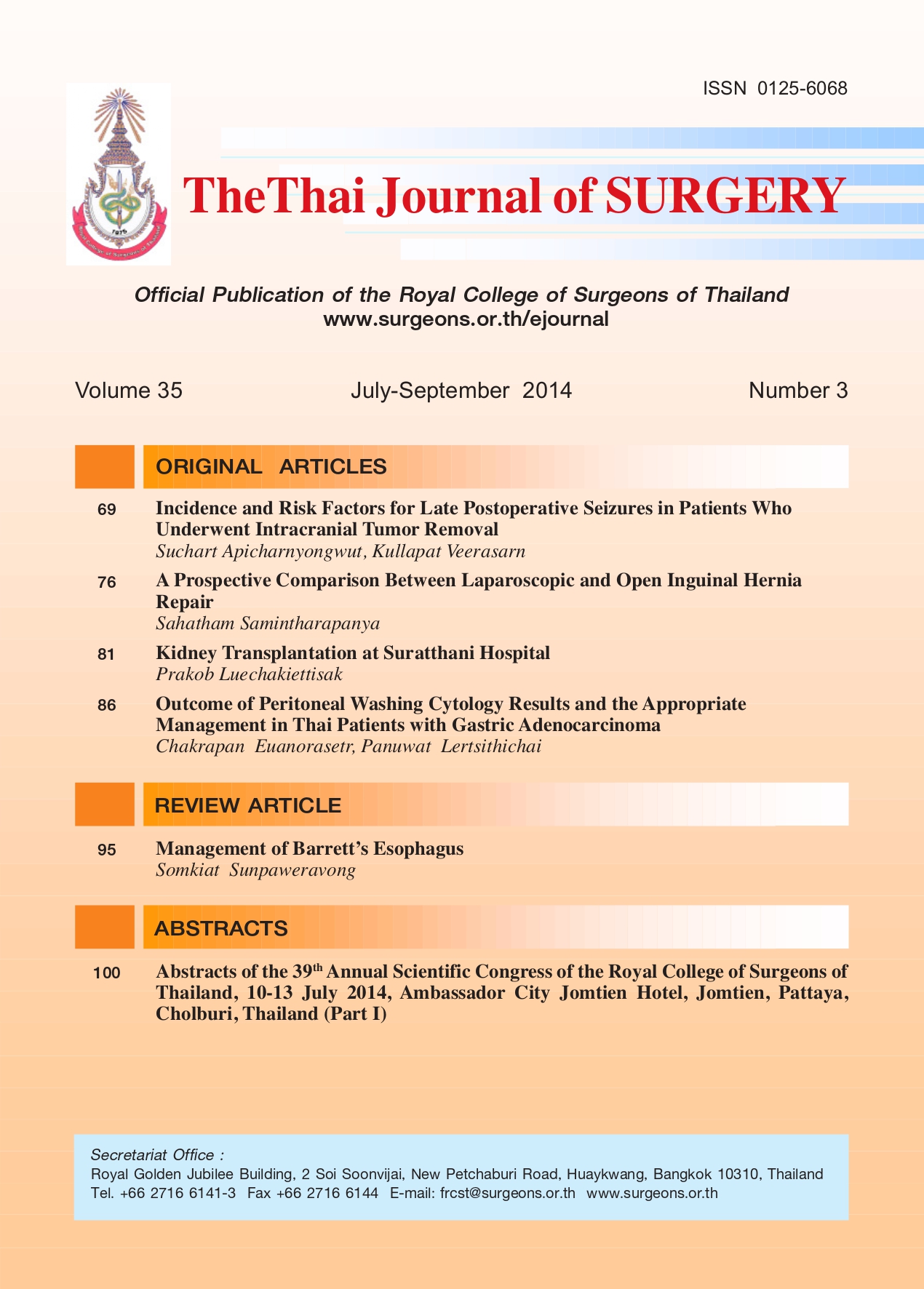Incidence and Risk Factors for Late Postoperative Seizures in Patients Who Underwent Intracranial Tumor Removal
Keywords:
brain tumor removal, late postoperative seizureAbstract
Objective: To estimate the incidence of late postoperative seizure (beyond 1 week to 2 years after surgery) inpatients undergoing intracranial surgery for brain tumors and to identify risk factors for late postoperative seizure
(POSz).
Method: A retrospective review of 252 patients who underwent intracranial brain surgery from June 2006 to
April 2008 was done. Data were collected including the demographics, clinical onset, neurosurgical procedure,
pathology report, postoperative antiepileptic drug (AED), and occurrence of POSz. The incidence of late POSz at one
and two years was estimated. Demographic and clinical factors possibly associated with the occurrence of late
postoperative seizure were identified using univariable and multivariable logistic regression analysis.
Results: The overall incidence of late POSz (at 1 year) was 11% (28/252). The incidence of late POSz in the
supratentorial extra-axial group was 16% (12/77), 48% (16/33) in the intra-axial group, and none for other locations.
In terms of tumor pathology, the incidence of late POSz was 46% (12/26) in the low grade glioma (LGG) group, 40%
(4/10) in the high grade glioma (HGG) group, 8% (11/130) in meningioma group, while other pathology groups had
no occurrence of seizures. Factors significantly associated with late POSz on univariable analysis included pathology
of tumor, location of tumor, cortical incision and dissection, history of previous seizures, as well as early POSz and
radiation therapy (RT). However, on multivariable analysis only early POSz was independently and significantly related
to late POSz. The overall incidence of late POSz at 2 years was also 11% (20/191). The incidences of late POSz at two
years subclassified according to location and pathology were similar to those at one year. Factors significantly associated
with late POSz within two years were also similar to those at one year.
Conclusion: Patients with intracranial glioma and meningioma, located in the supratentorial cortical and
subcortical areas, having a history of previous seizures, having early POSz, as well as RT and STR, are at high risk for
late POSz. Approximately 97% of late POSz occurred within 1 year. Careful follow up and monitoring of AED levels
in patients with a high risk for late POSz in first year after surgery should be done.
Downloads
Published
How to Cite
Issue
Section
License
Articles must be contributed solely to The Thai Journal of Surgery and when published become the property of the Royal College of Surgeons of Thailand. The Royal College of Surgeons of Thailand reserves copyright on all published materials and such materials may not be reproduced in any form without the written permission.



